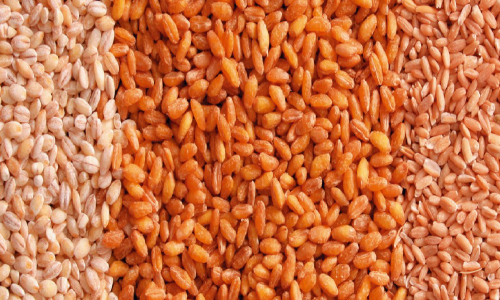Practice Scenario

Meet TEDDY
A 4-month-old, male, Great Dane puppy
- Teddy is presented today for his final puppyhood vaccinations.
- When asked about Teddy's diet, his owner said Teddy eats a complete and balanced food that the breeder provided. Since the food is nearly gone, the owner wants to provide Teddy with a "more natural diet."
- Teddy’s owner plans to feed a grain-free dog food, possibly one that is also raw. The owner eats a gluten-free diet and feels "much healthier." Teddy’s owner wants a long, healthy life for Teddy, too.
- The owner also asks if Teddy needs a calcium supplement. His sire is a large, heavy dog; the owner believes Teddy will be similar in size and weight.
Ingredients in Pet Food
Grains Are a Rich Source of Nutrients for Pets
While there is a belief that grains are only used as "fillers" or may be a cause of food allergies, grains are in fact a valuable source of nutrients in pet food.

Key Messages
- Grains are the seeds of cereal grasses and include corn, wheat, oats, rice, barley, rye and others.
- Grains are primarily used in pet food as a source of digestible carbohydrates that provide glucose, the most important energy source for all cells in the body. Grains also contribute nutrients such as protein, fiber, essential fatty acids, B vitamins and minerals.
- Not all grains contain gluten. Although the gluten found in wheat, barley and rye can trigger an immune response in humans with celiac disease, gluten allergies are extremely rare in dogs and have not been identified in cats. Pets are more likely to be allergic to beef, dairy or chicken than to a grain like wheat or corn.

"Grains are not just added to pet food for bulk, they are actually a valuable source of nutrients. Allergies to grains or gluten are extremely rare in dogs and have never been reported in cats."
To Share With Pet Owner:
Grains in Pet Foods
Grains provide valuable nutrients, but pet owners may believe that grains are “fillers” or that they may be a source of food allergies.
Additional Resources
Masisi, K., Beta, T., & Moghadasian, M. H. (2016). Antioxidant properties of diverse cereal grains: A review on in vitro and in vivo studies. Food Chemistry, 196, 90–97. doi: 10.1016/j.foodchem.2015.09.021
Jaworski, N. W., Laerke, H. N., Knudsen, K. E., & Stein, H. H. (2015). Carbohydrate composition and in vitro digestibility of dry matter and nonstarch polysaccharides in corn, sorghum, and wheat and coproducts from these grains. Journal of Animal Science, 93, 1103–1113. doi: 10.2527/jas.2014-8147
Verlinden, A., Hesta, M., Millet, S., & Janssens, G. P. J. (2006). Food allergy in dogs and cats: A review. Critical Reviews in Food Science and Nutrition, 46, 259–273. doi: 10.1080/10408390591001117
